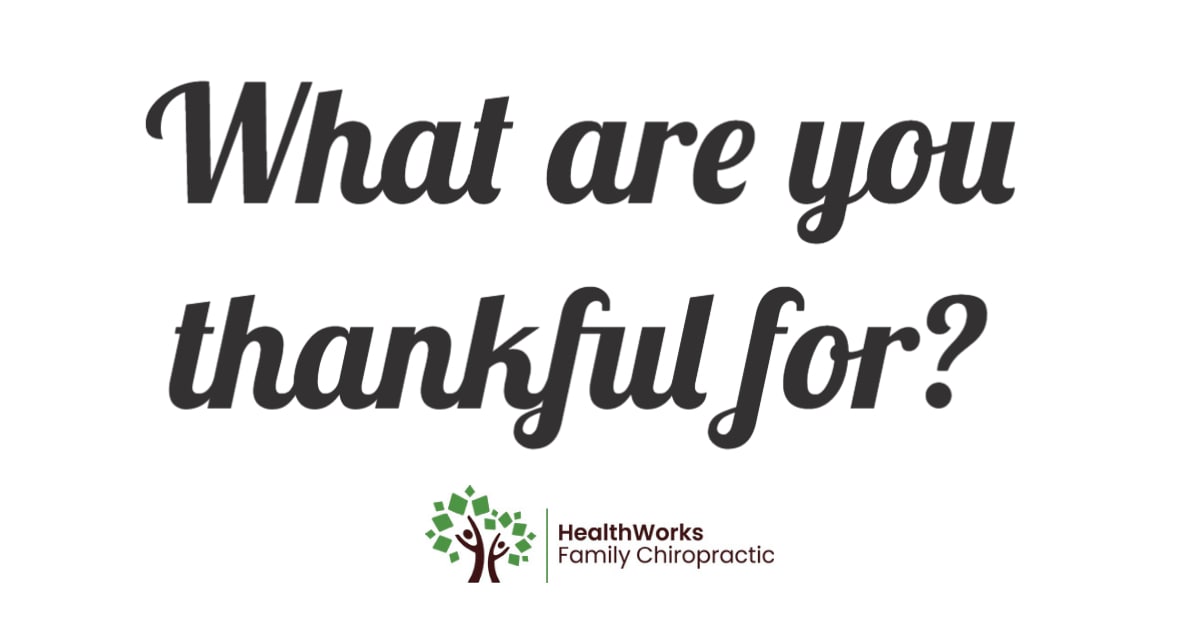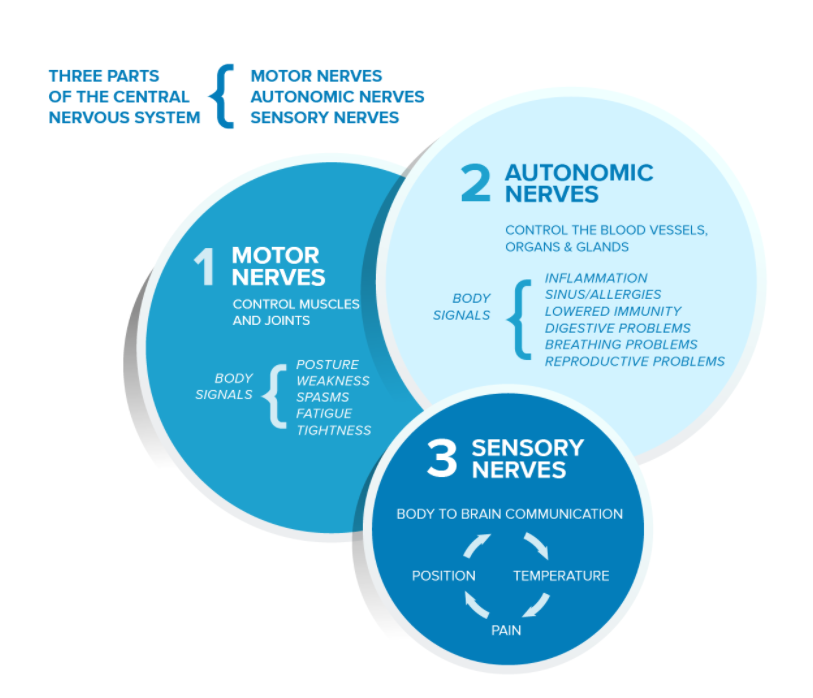Thankful for Upper Cervical Chiropractic
Typically, I don’t get too personal in my blogs, but, after the past almost 3 years of the Covid debacle, I can honestly say that I’m grateful to Upper Cervical Chiropractic Care and the many patients that we, at HealthWorks, get the opportunity to help, heal, and become our family. I don’t believe in coincidence but believe in the Divine intervention that brings each person to our doorstep.
When I started my journey in chiropractic, I thought I was just going to get a temporary secretarial job right after high school as college at the time just didn’t seem like the path I wanted to embark upon. So, I can type 65 words per minute, can answer phones with ease, and wanted a predictable work schedule—seemed like the perfect fit. I didn’t know how much it would change the entire course of my life… Personally, chiropractic helped my chronic migraines and urinary tract problems that I had been suffering from for most of my short life (remember I was only 18 years old when I started as a chiropractic assistant). Fast forward 6 years and the day came when I witnessed what some would say is a “miracle” and once again, my life was changed.
Why Upper Cervical Chiropractic?
I was working for Dr. Bart Patzer in Austin, Texas. We were getting close to closing time and a couple walks in with a little bundle in the mother’s arms, we’ll call her Baby J. They looked desperate and exhausted. I went back to get the doctor as he was packing up to leave and I guess the look in my eyes conveyed everything that needed to be said…he dropped his belongings and headed up to the front of the office. We immediately brought the couple and Baby J down the hallway to the exam room. This tiny human came into this world with a fight on her hands. After over 24 hours in labor, got stuck in the birth canal and they were going to do an emergency c-section after pushing her up the birth canal, but apparently, she wanted to meet her parents the old-fashioned way, so they used forceps and then a vacuum to pull her out. She never let out the loud cry that all parents wait for after the baby takes its first breath, just a tiny whimper to know she was alive. They immediately put her on oxygen to help with her breathing and she was in the NICU for 48 hours due to apnea…she would stop breathing several times per day. They left the hospital with her attached to an apnea monitor in hopes that it was just a precaution. The monitor would go off so often and she didn’t seem to have even the energy to eat, they became increasingly concerned, so they were back in the pediatrician’s office within a few days. The doctor dutifully examined her and could find “nothing wrong” and could not figure out why this was occurring and gave them the gravest of outcomes with the possibility of her not making it should this situation continue.
The parents then called their family members to tell them the news. I believe Divine intervention came into play, as He does, by directing them to Dr. Patzer’s office in a “last ditch” effort to see if an upper cervical adjustment could be the answer they were looking for. You see, the family member they called is a chiropractor in South Carolina that knew that the respiratory regulating centers were in the brain stem. The atlas or C1 surrounds part of this region and if it’s out of alignment it can cause abnormal information to these regulatory respiratory centers.
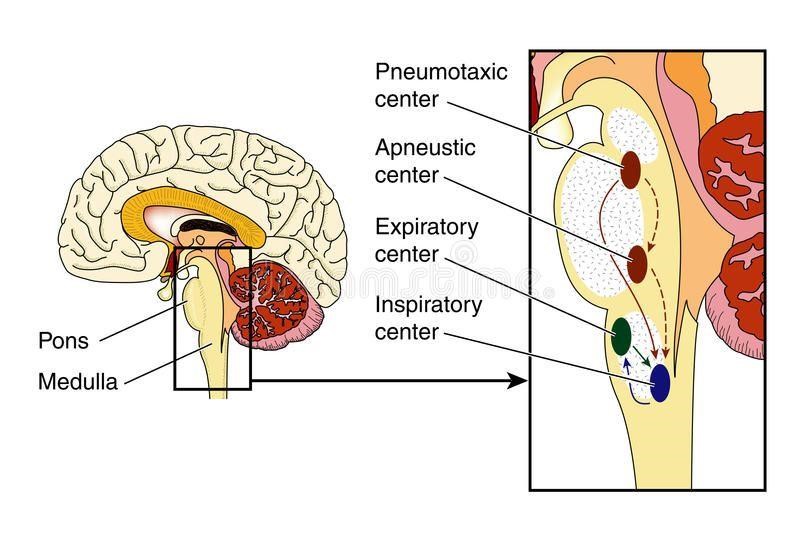
(This study shows a positive effect on those with one of the most common breathing problems, asthma): https://www.ncbi.nlm.nih.gov/pmc/articles/PMC2829683/
We were all in the exam room, me, Dr. Patzer, his wife, Kellye, and the parents along with this beautiful 12-day-old tiny baby in a diaper on the exam table. He performed a thermography exam to determine what levels are compromised and what appeared was a black bar at the very top of her spine which indicated significant compromise at the upper cervical (top of the neck) region very similar to the image below:
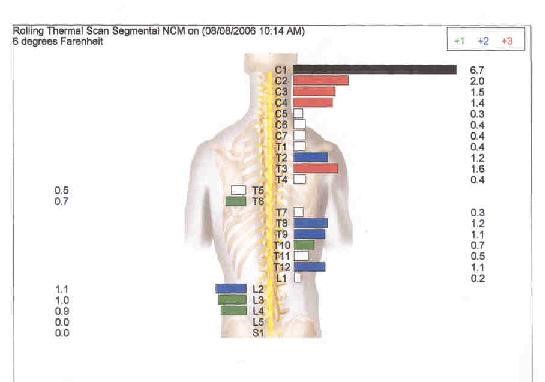
Thermal Scan
This determined, along with her history, that an atlas alignment was indicated. Dr. Patzer proceeded to apply a tiny pressure very gently with his pinky on Baby J’s atlas in a lateral movement. In just a short period of time, she took in a deep breath, turned bright pink from head to toe, and let out a full lung wail along with a bowel movement! She literally exploded with life! We all started to cry along with her. Her parents had never even heard her full-on cry neither at her birth nor anytime after as she never got a full breath in her lungs to do so…that day was the first day of her new and full life!
She came to see Dr. Patzer several times over the next couple of weeks and after 2 weeks no longer needed the apnea monitor. Her pediatrician had no explanation for how this occurred. But we knew. Her parents knew. That’s all that mattered.
That day was the day I decided to become a chiropractor-an upper cervical chiropractor. It was no longer a fleeting thought it was an “I must do this as God has led me on this path for a reason” kind of moment. It was a feeling in the deepest most sacred part of my heart and soul and it wouldn’t let go. Almost 18 years later and as hard it has been it’s been equally as rewarding and for that, I’m eternally grateful. Not only did that experience move me past my fears of being able to take on the challenge of chiropractic education, but it gave me an appreciation for what Upper Cervical Chiropractic can do and how many lives it can affect—to bring my community back to health and lead a life of purpose and gratefulness.
The understanding of the upper cervical spine and how it affects the health of the individual is what HealthWorks is all about. We not only look at the thermography scan as we did with Baby J (nerves going to the organs and glands) but use a Surface EMG (nerves going to the muscles), as well as Heart Rate Variability which determines the overall tone of the Autonomic Nervous System or how well our body deals with stress (chemical, physical and emotional stressors).
This technology allows us to objectively measure how well your nervous system is functioning and give you solid answers on how to restore optimal function so you can live to your full potential.
Here’s a great graphic to visualize the components of your nervous system exam:
The three scans together then give us your CoreScore which is based on a scale from 0- 100. The higher the number, the better the communication along those important nerves. If your score places you in the “challenged” category. This means that daily stress has become a constant habit, or your body is in a state of constant compensation. The fact that you are feeling symptoms is just another way your body is telling you that it can no longer compensate for the stresses that have been placed upon it. LISTEN TO YOUR BODY!
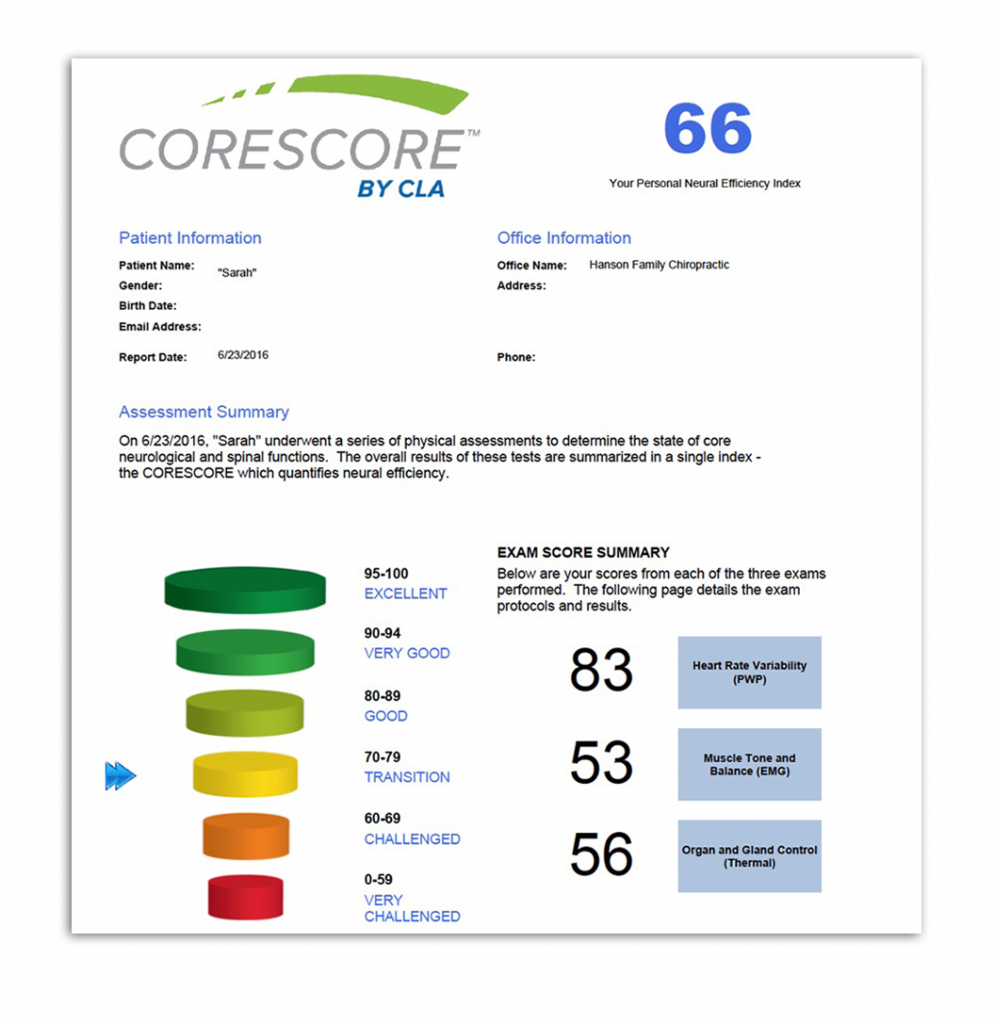
CORESCORE
Heart Rate Variability is an objective measure that gives us a clear picture of how well our body is dealing with whatever stressors, known or unknown to us are affecting our overall ability to heal. A blog from Harvard Health even indicates that Heart Rate Variability is directly linked to our well-being.
https://www.health.harvard.edu/blog/heart-rate-variability-new-way-track-well-2017112212789
What does Heart Rate Variability have to do with being grateful?
Well, if you’re consistently tired and stressed and subsequently depressed and overwhelmed about your health circumstances, how much capacity do you have for being grateful? The answer to that for most people is NOT MUCH! Heart Rate Variability is a great measure to determine whether the season you are in, is subsequently affecting your health or ability to heal.
We’ve all been there and know someone (or several someone’s) that carries the weight of the world on their shoulders and can bring the whole room down with their presence—not that they intentionally mean to, it’s just that they are stuck in this cycle and their outlook can become more grim day by day. I realize that much of this outlook on life may be due to circumstances beyond their control, however, the longer they remain in this state, the more it will affect their health including how well their neuromusculoskeletal system is functioning. This can lead to chronic pain, headaches, migraines, and other health challenges that make being grateful or having a purpose in life very difficult.
How does an atlas misalignment affect Heart Rate Variability?
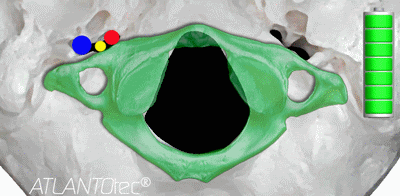
Blue = jugular vein Red = carotid artery Yellow = vagus nerve
If you look at the animation above, you’ll notice that the atlas misalignment, primarily the rotational component, will compress the Vagus nerve (as well as the internal jugular vein and the carotid artery). When ANY nerve is compressed, does it function well? NO! Well, the Vagus nerve, is a parasympathetic nerve (rest and digest) and is also called the “wandering nerve” as it extends from the brainstem all the way down to the large intestine! It contains both sensory and motor components and is responsible for keeping the “tone” of the autonomic nervous system. When the Vagus nerve is compressed and/or damaged, it can cause these symptoms:
- difficulty speaking.
- loss or change of voice.
- difficulty swallowing.
- loss of the gag reflex.
- low blood pressure.
- slow heart rate.
- changes in the digestive process.
- nausea or vomiting.
- anxiety and/or depression.
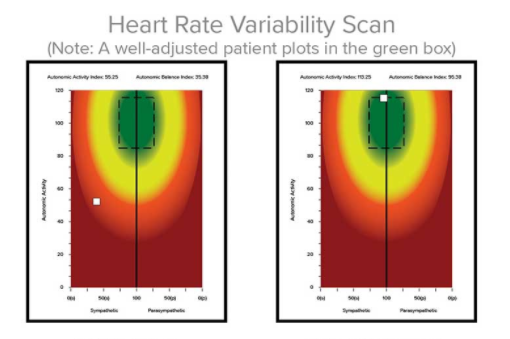
Heart Rate Variability Scan
Is heart rate variability a good measure of health?
Heart Rate Variability (HRV) looks at the overall balance and capacity of the Autonomic nervous system. A combination of lifestyle stressors and events constantly “sits on our shoulders” and pushes us down on us while our nervous system consistently tries to resist these stressors. Now, if the external stressors gradually overwhelm your ability to adapt, then it begins to interfere with the nervous system’s ability to compensate and that lower capacity puts the patient in a vulnerable position. They don’t have the necessary reserves to remain resilient in the face of ongoing or upcoming stressors. They have a suppressed recovery response and as the stresses accumulate or continue their health status can decline more rapidly. The statement “getting sicker, quicker” applies here. Let’s face it, stress isn’t going anywhere. Becoming more resilient in the face of what life brings is what is needed to thrive.
So, how do I increase my Heart Rate Variability Score?
- Make time for a hobby. This should be something that invigorates and is not draining. It should give you joy and a reprieve from your current stressors. This doesn’t necessarily mean you have to spend hours doing this activity, just that you make it a habit to find time for yourself.
- Read. Reading is calming and can take us to a different place. It opens up new worlds, can be educational, and spark creativity.
- Give yourself a “media detox”. Honestly, the mainstream and social media have done so much damage over the past few decades with their policy of “If it bleeds, it leads”. It’s all bad news whether it’s coming from a news anchor or a keyboard warrior!
- Reduce screen time. This is especially important to those who have office jobs that require hours of time in front of a computer screen. At the very least, stop all screen time at least 1 hour before bedtime AND get some blue light glasses to reduce the impact it has on your brain.
- Journal. Journaling allows you to put down on paper the good, bad, and ugly that is going on in your life. It can allow you to release what is causing stress and celebrate what fabulous things are occurring too. A simple “What I’m Thankful For” journal can do wonders.
- Exercise. I know you’ve heard this one before, and you don’t have to be a gym rat, just walking 30-minutes per day can ease overall stress and increase overall health.
- Get some sun! Sun is vital for a happy and healthy life. Getting outside between the hours of 10 am-5 pm for 10-20 minutes can make a HUGE difference in the way you feel. It’s free and it’s amazing!
- Breathe from your belly and exhale longer than you exhale.
You see, gratefulness is not only a state of mind but is greatly affected by your overall well-being. Having objective measures as well as a team of Upper Cervical Chiropractors and a wonderful staff may be the missing component to achieving optimal health.
Our promise to you
HealthWorks is dedicated to a comprehensive and specific approach to taking care of spinal and nervous system needs. Let us help you, your family members, friends, and co-workers find out how taking care of the most important system in the body will create optimal health that will last a lifetime!
If we find we’re not the best to help, we promise to refer you to someone who is.
